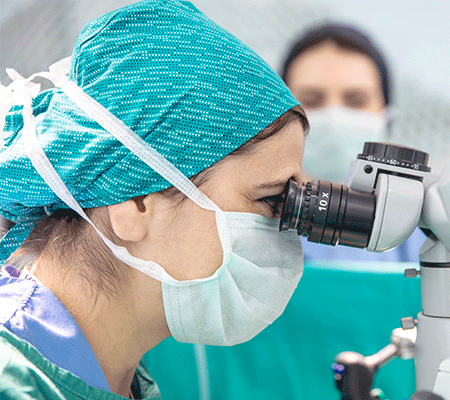
Technology allows surgeons to complete the surgery virtually to ensure best placement and position.
With advances in technology, new tools are available to orthopedic surgeons. One advancement, computer-assisted surgery, allows shoulder surgeons to virtually perform the surgery before entering the operating room.
Computer-assisted surgery, sometimes called robotic surgery, allows a surgeon to use a software system to help plan procedures and control and move surgical instruments. Surgeons can use this system during some shoulder replacements and reverse replacements.
The technology is key to helping the surgeon find the best placement for implants. “When we work with the shoulder, just like hips or knees, we want to place the implant where there’s the greatest amount of bone to keep it stable,” said Dr. Owen Keenan, Marshfield Clinic Health System orthopedic surgeon.
Improving pre-operative planning for long-term success
Computer-assisted systems can help in several ways. The 3D interactive program uses an image of the shoulder from a preoperative CT scan. From there, the surgeon can move the images and get different angles to look into the shoulder. “I can complete the surgery virtually on the computer to make sure I like the placement and position,” Keenan said.
When working with shoulder fractures or arthritis where there is a loss of bone, finding the strongest area of the shoulder is important.
Gathering all of this information from a noninvasive CT scan breaks down much of the planning work. In traditional cases, surgeons don’t have as much information and have to make decisions based on what they see after they begin the surgery. “With this system all our planning and decision making is done before we start surgery,” Keenan said.
Precision increases placement stability
The coordinates are set and the GPS navigation ensures placement is perfectly precise. It is not a full robotic experience. The surgeon is placing the implant by hand, with the guide of the GPS navigation. Where the surgery differs is the long-term use of the shoulder.
“When you have an implant, you worry about it getting loose over time,” Keenan said. “With this system we are more confident the best area of the bone was chosen, and it will survive long time.”
To perform a computer-assisted surgery, the surgeon learns the technology and software. After training with these tools, they can offer the service to patients. This technology also is available for knee, ankle and hip replacements. It has been available in orthopedics for about five years.
“I see this technology expanding,” Keenan said. “It’s exciting to have another tool available to help patients.”
Related Shine365 Posts
Shoulder replacement surgery: 3 things to know
Physical therapy before surgery may reduce recovery time


Reread your 2nd sentence in this article. Don't you want to say, "ONE advancement" rather than ONCE advancement. What's a "reverse" replacement?
Hello,
Thank you for pointing out the error in the second sentence – that has been corrected. If you would like to learn more about reverse total shoulder replacements, you may find this link helpful: https://www.hopkinsmedicine.org/health/treatment-tests-and-therapies/reverse-total-shoulder-replacement
Hope you have a good day,
Jake